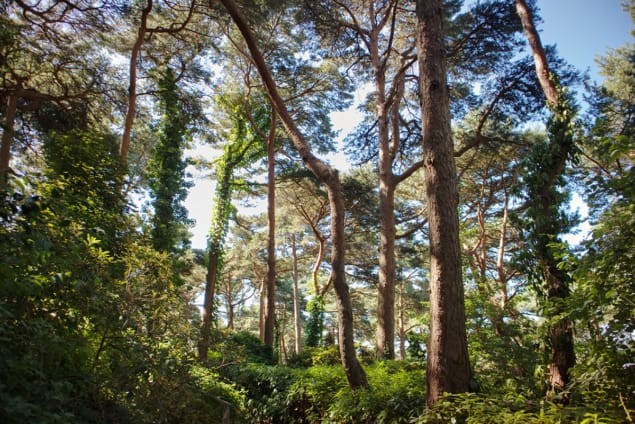
Planting trees could protect against storm damage. A new study suggests that major reforestation across Europe has the potential to reduce the number of extra-tropical cyclones by up to 80%.
Previous research showed that extra tropical cyclones reduce in intensity when the land surface becomes rougher. This set Danijel Belušić from the Swedish Meteorological and Hydrological Institute and colleagues to wondering how much difference it would make to extra-tropical cyclone activity across Europe if the continent was covered in trees.
Using a regional climate model and a cyclone-tracking algorithm, the researchers investigated long-term changes in the number and intensity of cyclones, and their effect on precipitation, under conditions of deforestation and complete afforestation.
The results suggest that if Europe was completely covered in trees, the number of cyclones would drop between 10 and 80%, compared to the case of a continent devoid of trees. West European coastal areas experienced the smallest reduction (10%), most likely because cyclones tend to arrive from the west and have less opportunity to interact with trees before hitting these areas. But by the time weather systems reach eastern Europe, Belušić and his colleagues estimate that afforestation could reduce the number of cyclones by as much as 80%.
“The increased roughness due to forests spins down a cyclone and reduces its intensity,” says Belušić.
With weaker and fewer cyclones, Europe would inevitably have less heavy rain. The model suggests that complete afforestation would reduce extreme winter rainfall by as much as 25%. However, Belušić and his colleagues suggest that this loss could be at least partially compensated by trees’ ability to access deep soil moisture.
“For example, due to the increased evapotranspiration, the atmosphere receives more moisture from the surface which can be converted into cloud and precipitation,” says Belušić, whose findings are published in Environmental Research Letters (ERL).
Indeed, the team’s model shows that total precipitation is similar for both scenarios, but that the afforested Europe experiences an increase in weak to moderate precipitation and a decrease in very heavy rain compared to a deforested Europe.
It’s likely that the total area of trees is important. Small pockets of forest are unlikely to increase surface roughness sufficiently to impact an extra-tropical cyclone; these tend to be several hundred kilometres wide. Right now, Belušić and colleagues don’t know how large the forest must be in order to impact a cyclone, but their model does confirm that very large areas of roughness do have an impact. For the British Isles, which are similar in area to a typical cyclone, the researchers show that a covering of trees would reduce the number of cyclones over both the British Isles and the North Sea.
In theory, surface roughness could be increased by covering Europe with wind turbines or tall buildings but these structures wouldn’t bring the evapotranspiration benefits that accompany trees. Belušić speculates that artificial increases in roughness like these would be accompanied by significant decreases in rainfall.
The researchers also note that mass tree-planting to reduce cyclones should work in any mid-latitude location, not just Europe.
Currently, covering Europe with trees is hypothetical; the scientists say that more research is needed to understand the science better and to investigate the feasibility of such a major project. But as climate continues to change, solutions like this could become serious contenders in helping us adapt to increasingly extreme weather.



